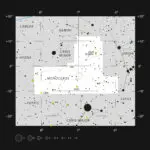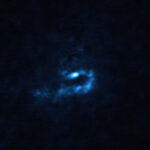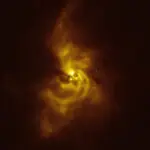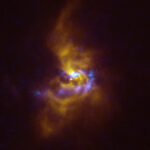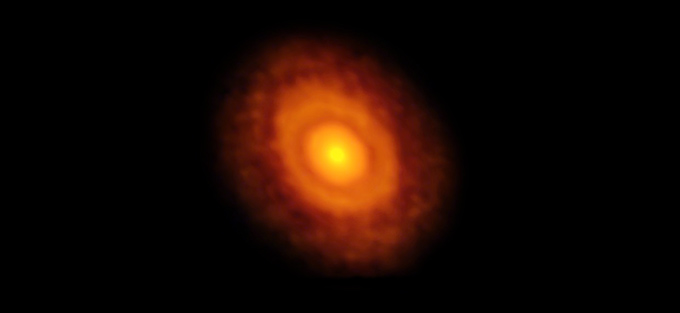Star-Birth Spectacle Unveiled from Chile
ALMA and VLT illuminate the birth of stars and planets.
Using the unprecedented power of the Chile-based Atacama Large Millimeter/submillimeter Array (ALMA), an international team of astronomers have made a new discovery, shedding light on the mysteries of star and planet birth. The team was led by Philipp Weber of the Universidad de Santiago de Chile (USACH) and Millennium Nucleus on Young Exoplanets and their Moons (YEMS).
The research, recently published in the Astrophysical Journal Letters, involved the examination of FUor object V960 Mon, a young outbursting star located over 5,000 light-years away in the constellation Monoceros. In synergy with the Very Large Telescope (VLT) of the European Southern Observatory (ESO), also located in Chile, they were able to capture an image that exhibits stunning spiral arms extending over hundreds of astronomical units. This image was taken just two years after the star experienced a sudden outburst in 2014, increasing its brightness more than twenty-fold.
"Looking at the star after the outburst, we were astonished by the huge spiral structures surrounding V960 Mon," said Weber. "This led us to delve into existing ALMA data to better understand these spirals."
Antonio Hales, a member of the research team and Deputy Manager of the North America ALMA Regional Center (NA-ARC) at the National Radioastronomy Observatory (NRAO), celebrates that “this discovery underscores the invaluable scientific asset that is ALMA's public data archive. It stands as a veritable gold mine brimming with unexplored treasures.”
Upon reanalyzing the ALMA data, the team discovered clumps of solid particles within the spirals, estimated to be several times the mass of Earth. These clumps are suspected to provide significant insight into the early stages of star and planet formation.
"For over a decade, we've been hunting for these clumps with ALMA, as theories of planet formation predict their presence for the creation of large planets," explained co-author Sebastián Pérez, also from USACH and YEMS. "Our discovery may draw direct connections between the formation of stars and planets."
Alice Zurlo, a researcher from Universidad Diego Portales (UDP) and YEMS, Chile, and part of the team, shared more about the significance of this discovery: “With ALMA, it became apparent that the spiral arms are undergoing fragmentation, resulting in the formation of clumps with masses akin to those of planets.”
This discovery, made possible through the combined powers of ALMA and VLT, has provided a groundbreaking view of these celestial phenomena. Future research will focus on observing FUor outbursts detected by the Legacy Survey of Space and Time (LSST) using the Vera C. Rubin telescope and once in operations, the ESO’s Extremely Large Telescope (ELT), targeting the circumstellar environment of this outbursting stars. This approach could help establish the prevalence of such features around FUor[1] sources during the early stages of outburst events, offering further insights into star and planet formation.
Weber concludes, "With these observations, we are taking a significant step forward in understanding the birth of stars and planets. We look forward to more exciting findings as we continue to study these fascinating celestial structures."
Note:
[1] An FU Orionis or FUor star is a young, forming star that experiences dramatic brightness outbursts over years or decades, due to an increase in the accretion of material from its surrounding disk. These events can influence planet formation.
Additional Information
The team behind this work comprises young researchers from diverse Chilean universities and institutes, under the Millennium Nucleus on Young Exoplanets and their Moons (YEMS) research centre, funded by the Chilean National Agency for Research and Development (ANID) and its Millennium Science Initiative Program. The two facilities used, ALMA and VLT, are located in Chile’s Atacama Desert.
This research is presented in a paper to appear in The Astrophysical Journal Letters (doi: 10.3847/2041-8213/ace186).
The team is composed of P. Weber (Departamento de Física, Universidad de Santiago de Chile, Chile [USACH]; Millennium Nucleus on Young Exoplanets and their Moons, Chile [YEMS]; Center for Interdisciplinary Research in Astrophysics and Space Exploration, Universidad de Santiago de Chile, Chile [CIRAS]), S. Pérez (USACH; YEMS; CIRAS), A. Zurlo (YEMS; Núcleo de Astronomía, Universidad Diego Portales Chile [UDP]; Escuela de Ingeniería Industrial, Universidad Diego Portales, Chile), J. Miley (Joint ALMA Observatory, Chile; National Astronomical Observatory of Japan, Japan), A. Hales (National Radio Astronomy Observatory, USA), L. Cieza (YEMS; UDP), D. Principe (MIT Kavli Institute for Astrophysics and Space Research, USA), M. Cárcamo (YEMS; CIRAS; USACH, Faculty of Engineering, Computer Engineering Department, Chile), A. Garufi (INAF, Osservatorio Astrofisico di Arcetri, Italy), Á. Kóspál (Konkoly Observatory, Research Centre for Astronomy and Earth Sciences, Eötvös Loránd Research Network (ELKH), Hungary; CSFK, MTA Centre of Excellence, Hungary; ELTE Eötvös Loránd University, Institute of Physics, Hungary; Max Planck Institute for Astronomy, Germany), M. Takami (Institute of Astronomy and Astrophysics, Academia Sinica, Taiwan, ROC), J. Kastner (School of Physics & Astronomy, Rochester Institute of Technology, USA), Z. Zhu (Department of Physics and Astronomy, University of Nevada, USA; Nevada Center for Astrophysics, University of Nevada, USA), and J. Williams (Institute for Astronomy, University of Hawai‘i at Manoa, USA).
The Atacama Large Millimeter/submillimeter Array (ALMA), an international astronomy facility, is a partnership of ESO, the U.S. National Science Foundation (NSF) and the National Institutes of Natural Sciences (NINS) of Japan in cooperation with the Republic of Chile. ALMA is funded by ESO on behalf of its Member States, by NSF in cooperation with the National Research Council of Canada (NRC) and the National Science and Technology Council (NSTC) in Taiwan and by NINS in cooperation with the Academia Sinica (AS) in Taiwan and the Korea Astronomy and Space Science Institute (KASI).
ALMA construction and operations are led by ESO on behalf of its Member States; by the National Radio Astronomy Observatory (NRAO), managed by Associated Universities, Inc. (AUI), on behalf of North America; and by the National Astronomical Observatory of Japan (NAOJ) on behalf of East Asia. The Joint ALMA Observatory (JAO) provides the unified leadership and management of the construction, commissioning and operation of ALMA.
Images
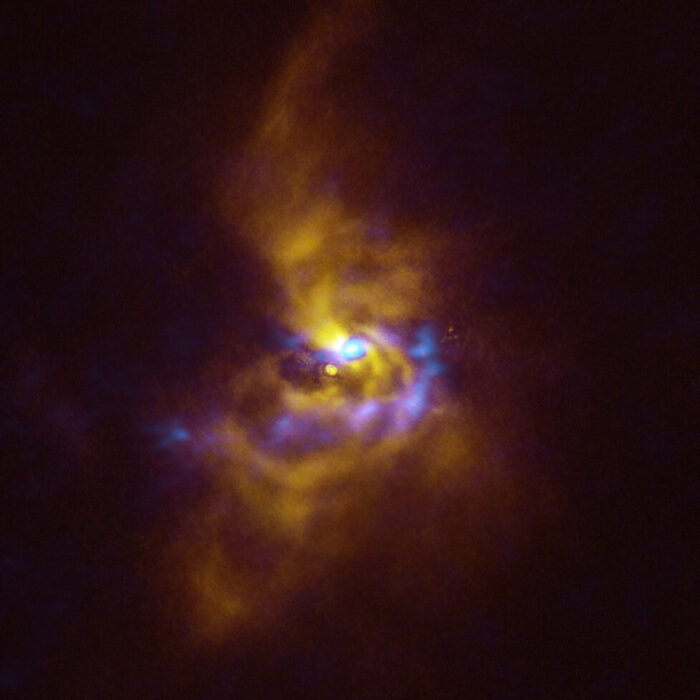
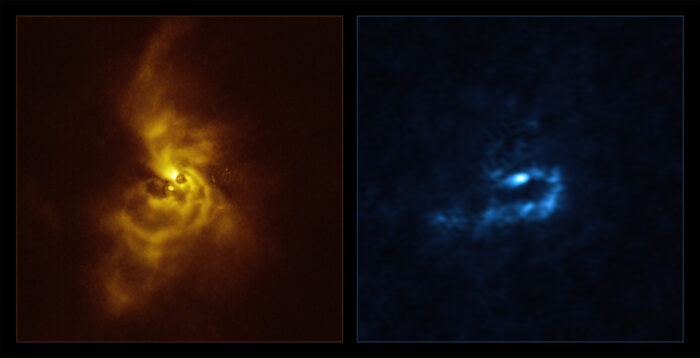
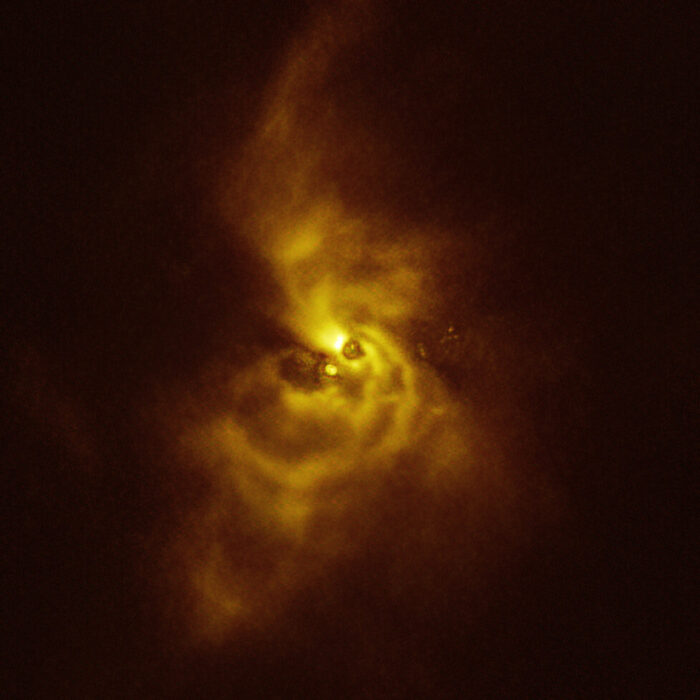
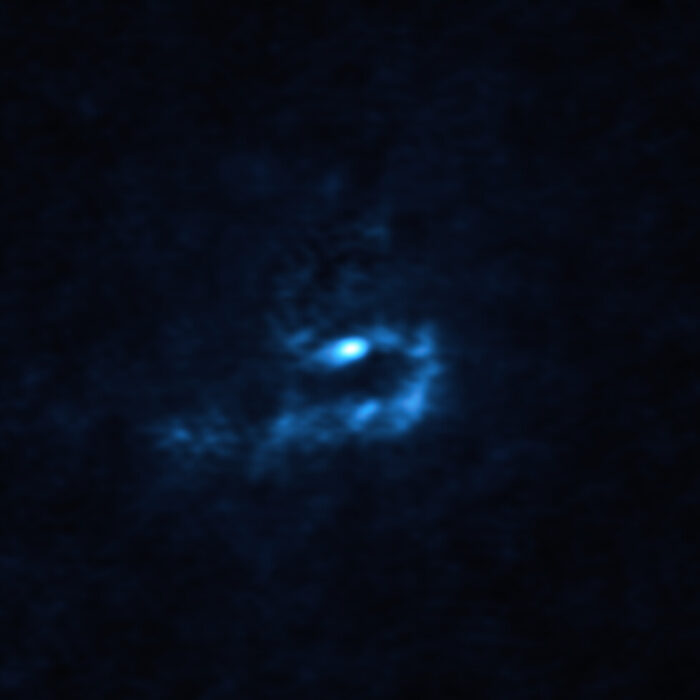
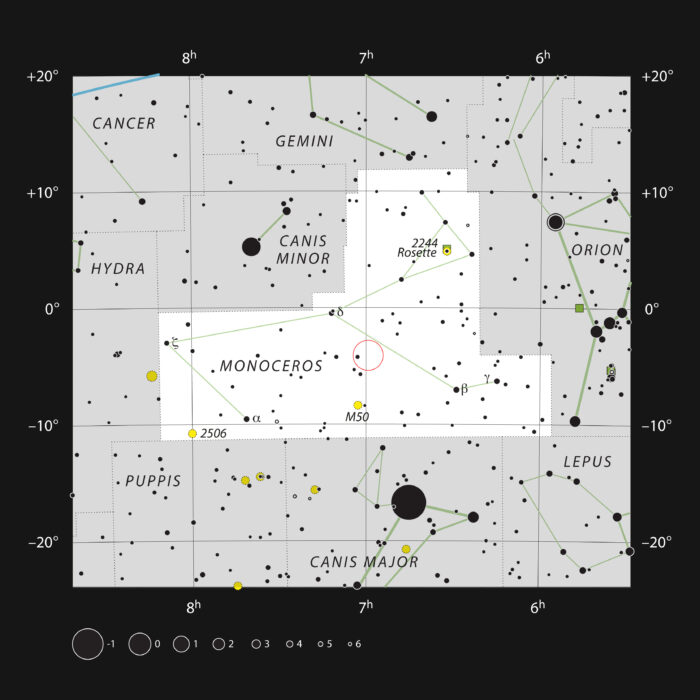

Video
Contacts
-
Nicolás Lira
Education and Public Outreach OfficerJoint ALMA Observatory, Santiago - ChilePhone: +56 2 2467 6519Cel: +56 9 9445 7726Email: [email protected] -
Bárbara Ferreira
ESO Media Manager -
Amy C. Oliver
Public Information & News Manager -
Naoko Inoue
EPO officer, ALMA ProjectNational Astronomical Observatory of Japan (NAOJ)Email: [email protected]

